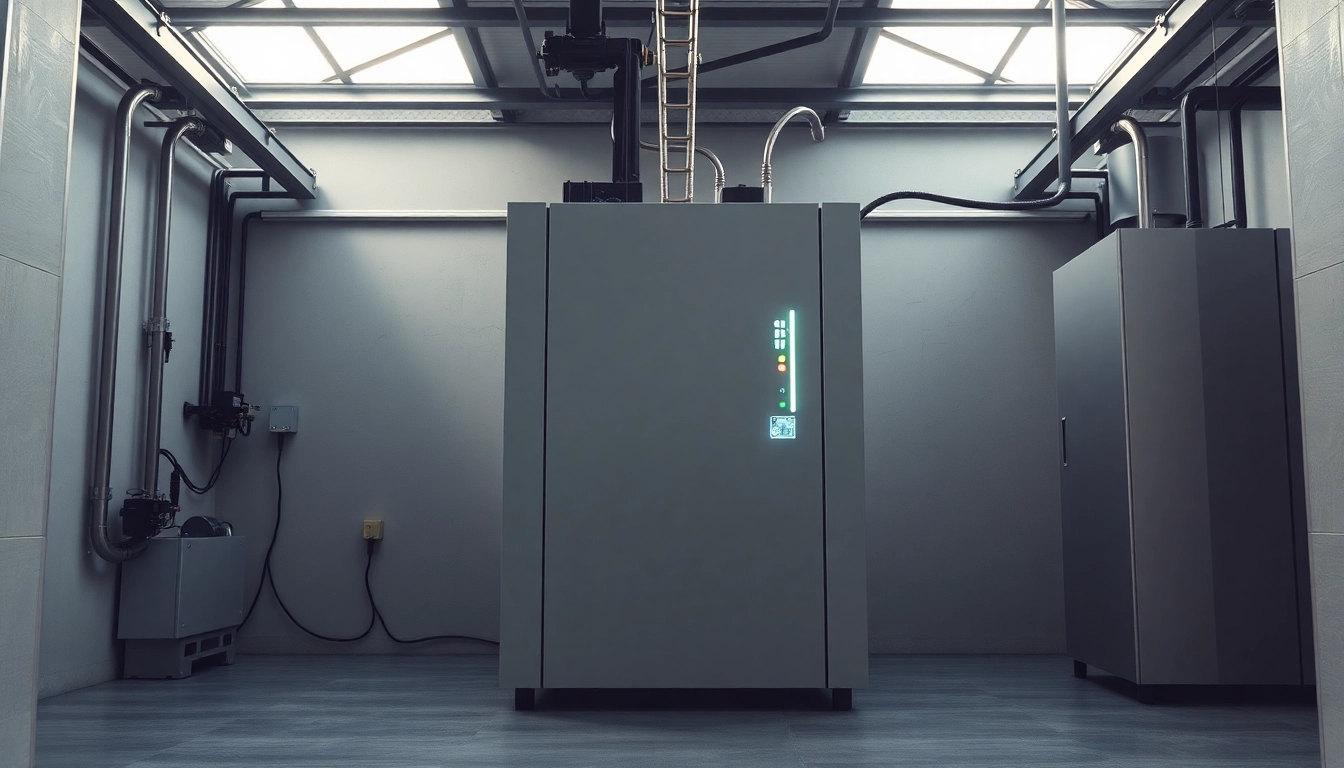Introduction to Redispersible Emulsion Powder
As industries continue to evolve and seek innovative materials for better performance, Redispersible Emulsion Powder has emerged as a crucial component in various formulations. This powder serves as a versatile additive that enhances the properties of construction materials, adhesives, paints, and coatings, leading to improved performance and durability. Understanding the fundamental aspects of Redispersible Emulsion Powder reveals its significance and broad applicability across multiple sectors.
What is Redispersible Emulsion Powder?
Redispersible Emulsion Powder is a type of polymer powder that, when mixed with water, forms a stable emulsion. It is typically derived from synthetic polymers and is produced by spray-drying a water-based emulsion. The key feature of this powder is its ability to rehydrate and disperse back into a liquid state, making it an effective additive in various formulations.
The primary purpose of Redispersible Emulsion Powder is to improve the performance of construction and paint products. Once added to formulations, it acts as an adhesive and provides flexibility, improved adhesion, and resistance to environmental factors such as water and UV radiation.
Key Properties and Characteristics
Redispersible Emulsion Powder possesses several significant characteristics that contribute to its application in various industries. These properties include:
- Water Resistance: Redispersible Emulsion Powder offers exceptional water resistance, which is critical in construction applications where moisture can compromise material integrity.
- Flexibility: The powdered form allows for flexibility in formulations, enabling products to adapt to various environmental conditions without cracking or losing adhesion.
- Adhesion Strength: When re-dispersed, this powder enhances the adhesion of mixtures to various surfaces, ensuring durability and longevity of the applied products.
- Ease of Use: Being in powder form allows for easy transportation, storage, and application, making it a convenient material for manufacturers.
Common Applications in Various Industries
The versatile nature of Redispersible Emulsion Powder lends itself to a wide range of applications across different industries:
- Construction: In construction materials like adhesives, mortar, and plasters, Redispersible Emulsion Powder improves flexibility, adhesion, and workability.
- Paints and Coatings: It is commonly used in water-based paints and coatings to enhance durability, color retention, and application performance.
- Flooring: The powder is utilized in flooring compounds to provide better adhesion and resistance against wear and tear.
- Textiles: In the textile industry, it serves as a binder and improves the water resistance and mechanical properties of coatings.
Manufacturing Process of Redispersible Emulsion Powder
Raw Materials Used
The manufacturing of Redispersible Emulsion Powder involves several key raw materials, including:
- Polymer Resins: Various synthetic polymer resins are used as the base, including vinyl acetate-ethylene (VAE) and styrene-acrylic copolymers, which are essential for achieving desired properties.
- Surfactants: Surfactants are utilized to stabilize the emulsion, ensuring uniform distribution and enhancing water resistance once re-dispersed.
- Fillers: Fillers can be added to improve product performance and reduce production costs, while still maintaining quality.
- Preservatives: To prevent microbial growth during storage, preservatives are often included in the formulation.
Step-by-Step Production Method
The production of Redispersible Emulsion Powder generally follows these steps:
- Emulsion Preparation: The process begins with the preparation of a stable emulsion by mixing polymer resins and surfactants with water.
- Homogenization: The mixture undergoes homogenization to achieve a consistent particle size, critical for achieving the desired performance characteristics.
- Spray Drying: The emulsified product is then spray-dried. In this step, hot air is blown through the emulsion, rapidly evaporating the water and converting it into fine powder.
- Cooling and Packaging: After drying, the powder is cooled and packaged, ready for distribution.
Quality Control and Assurance Standards
To ensure the highest quality of Redispersible Emulsion Powder, stringent quality control measures are necessary. This involves:
- Raw Material Testing: All raw materials must be tested for compliance with safety and performance standards prior to production.
- In-Process Monitoring: During manufacturing, key parameters such as particle size, viscosity, and moisture content are continuously monitored.
- Final Product Testing: Each batch of finished Redispersible Emulsion Powder undergoes thorough testing for performance attributes including adhesion, flexibility, and re-dispersibility.
Advantages of Using Redispersible Emulsion Powder
Enhanced Performance in Formulations
One of the most significant advantages of Redispersible Emulsion Powder is its capacity to enhance the performance of various formulations. By using this powder, manufacturers can achieve:
- Improved Adhesion: Products formulated with Redispersible Emulsion Powder show better adhesion to substrates compared to those without it.
- Increased Flexibility: As mentioned, when rehydrated, it forms a flexible film that prevents cracking, making it ideal for construction materials.
- Optimized Workability: The powder enhances the workability of mixtures, allowing for easier application and better surface finish.
Cost-Effectiveness for Manufacturers
Manufacturers often seek cost-effective solutions that do not compromise quality. Redispersible Emulsion Powder provides several financial benefits:
- Reduced Material Costs: The enhancement of existing formulations often allows for the reduction of more expensive components, such as binders.
- Lower Waste Rates: Improved product performance translates into less waste and rework, reducing overall manufacturing costs.
- Extended Product Lifespan: By enhancing durability, Redispersible Emulsion Powder contributes to longer-lasting products, which can lead to increased customer satisfaction and reduced return rates.
Environmental Benefits and Sustainability
In today’s environmentally conscious market, sustainability plays a critical role. The use of Redispersible Emulsion Powder aligns with sustainable practices in several ways:
- Water-Based Solutions: As a component of water-based formulations, using Redispersible Emulsion Powder promotes the reduction of volatile organic compounds (VOCs).
- Resource Efficiency: By optimizing formulations, it enables the use of fewer raw materials, thus conserving natural resources.
- Recyclability: Products incorporating this powder often demonstrate improved recyclability, fitting the circular economy model.
Challenges and Considerations
Storage and Handling Requirements
While Redispersible Emulsion Powder offers numerous benefits, it also presents some challenges, particularly in terms of handling and storage:
- Moisture Sensitivity: The powder can easily absorb moisture from the air, which may affect its performance. It should be stored in a cool, dry place with appropriate sealing to prevent moisture ingress.
- Dust Control: Handling the powder may generate dust, which necessitates adequate dust control measures during packing and transportation.
Compatibility with Other Ingredients
Another challenge for formulators is ensuring compatibility with other ingredients. It is essential to test formulations for:
- Stability: Ensure that the Redispersible Emulsion Powder does not negatively interact with other components, which can affect performance.
- Viscosity: Proper balancing of viscosity is crucial when combining with other thickening agents or fillers.
Regulatory Compliance and Safety Measures
Compliance with safety and regulatory standards is a significant concern, particularly for materials used in consumer-facing applications:
- Safety Data Sheets (SDS): Manufacturers must provide appropriate safety data to ensure effective handling and usage.
- Labeling Requirements: Labels must conform to regulations regarding content disclosure and safety warnings for end-users.
Future Trends in Redispersible Emulsion Powder
Innovations in Production Techniques
The future of Redispersible Emulsion Powder is poised to witness innovations in production methodologies that enhance efficiency and performance. Some key trends include:
- Advanced Drying Technologies: Emerging techniques utilizing improved spray-drying methods will enhance the uniformity and quality of the powder.
- Use of Sustainable Raw Materials: The adoption of bio-based polymer sources may become more prevalent, contributing to sustainability efforts in production.
Emerging Applications in New Markets
As researchers and developers continue to explore the versatility of Redispersible Emulsion Powder, several new applications are emerging:
- Influence in Personal Care: The cosmetic and personal care industries are beginning to integrate Redispersible Emulsion Powder into formulations, benefiting from its adhesive and film-forming properties.
- Adoption in Green Building Materials: As sustainable building practices rise, the demand for environmentally friendly materials that utilize Redispersible Emulsion Powder is expected to grow.
Market Outlook and Growth Potential
The market for Redispersible Emulsion Powder is anticipated to experience significant growth driven by several factors:
- Increasing Demand in Construction: The ongoing urbanization and construction boom in various parts of the world are projected to sustain demand for construction materials containing Redispersible Emulsion Powder.
- Emerging Economies: Growth in emerging economies, coupled with the demand for high-performance coating materials, is expected to advance market growth.



